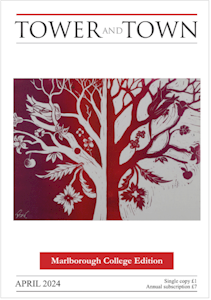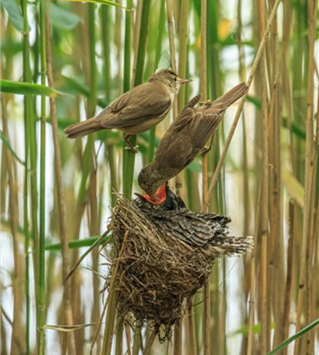

Tower and Town, April 2024 (view the full edition) (view the full edition)Nature Notes - NestingIn April, with Spring truly sprung, the natural world is preoccupied with mating and nesting. Otters are busy in their holts, badger cubs emerging from their setts, and fox cubs growing stronger by the minute in their earths. Above ground the birds are more obvious: some of our common species are nesting a week earlier than they did in the 1960's. The nest of the long-tailed tit is constructed from four materials- lichens, feathers, spider egg cocoons and moss- with over 6,000 pieces used for a typical nest. The nest is a flexible sac with a small, round entrance at the top, suspended either low in a gorse or bramble bush or high up in the forks of tree branches. The tit lines the outside with hundreds of flakes of pale lichens to provide camouflage while the inside is lined with more than 2,000 downy feathers to provide insulation. A lot of work for a nest that suffers a high rate of predation, with only a 17% success rate. Another small bird that works hard at nest production is the wren, Latin name troglodytes troglodytes. Troglodytes means cave-dweller in reference to its delicately constructed nest, which has only a small opening. Males will construct many nests-often six to twelve, which the females will choose and then line with moss, leaves or feathers. Great tits are opportunists when it comes to nesting: a crevice in a wall, an air duct, even an old traffic cone. It says something about our love of birds that notices are often taped onto post boxes in rural areas with the message: GREAT TITS NESTING - PLEASE USE NEXT AVAILABLE POST BOX I am not a good nest-finder, lacking the patience to stay still and observe as our blackbirds pay repeated visits to the same spot in our garden. The male is glossy and glamorous in April, rather less so in the summer months after the second or third broods have been and gone. And then, quite by accident, I look down from my garden ladder and spot a nest inside the Photinia-a goldfinch's clutch of four beautiful pale blue eggs. The cuckoo arrives in April and so does one of its favourite host species, the reed warbler.  Reed warblers tending fledgling cuckoo. © David White The female's strange bubbling call is a signal that it is on the look-out for foster parents to do the hard work. I love the male's soft, beguiling call, but when I think about that fat young cuckoo pushing all the other birds out of the nest I go off the species altogether. Robin Nelson |